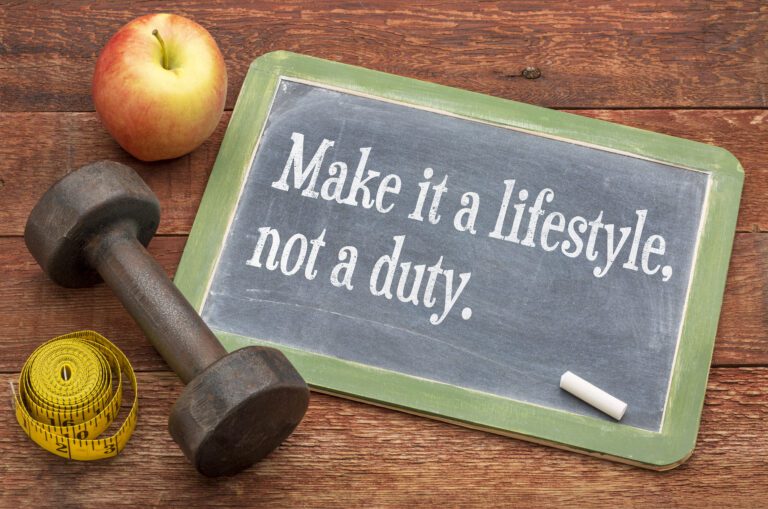What Are Some Common Fitness Myths?
There are dozens of common fitness myths. Wherever you look, fads are popping up about this diet or that workout plan. It is overwhelming if you do not know what you are looking for or what you are doing. It is also easy to get lost in the shuffle of information.
The fitness industry is dominant in selling new workout ideas, diets, and fitness equipment. Sadly, many who have entered this field see only money signs. Their primary concern is making money and not helping to improve people’s lives.
Do not get me wrong – I understand the importance of money. We need it to survive in this world. However, I will never put money ahead of my clients’ health.
The supposed fitness “experts” and “gurus” prey on the vulnerable searching for answers. They market their ideas to the public as “the answer.”
Unfortunately, whether you are a beginner or a seasoned veteran, there are no quick and easy fixes. I hope to educate, or re-educate you, on some of these myths.
As a disclaimer, I am not a medical professional. However, I have a diploma both in personal training and sports nutrition. Always consult your doctor before starting or changing your diet or workout program.
6 Common Fitness Myths Debunked
Myth #1
Women Who Lift Weights ‘Bulk Up’
This statement is entirely untrue. Testosterone builds muscle. Women do not have the same amount of testosterone in their bodies as men. Therefore, women cannot “bulk up” to the extent that men can.
The only way a woman can build the same type of musculature as a man is to take testosterone. Steroids increase a person’s testosterone, and this increases muscle mass.
Women simply do not bulk up the way men do when they lift weights.
Myth #2
A Fat-Free Diet Helps You Lose Weight
To lose weight, eat less fat. This theory sounds reasonable, right?
Well, it is not that simple. Our bodies are much more complex than that.
First, you need to look at the composition of macronutrients in your daily eating habits. The three macronutrients are fat, carbohydrates, and protein. Your body needs all three to function at an optimal level.
You need fat in your diet.
Simple.
True.
Cutting out the fat in your diet will actually inhibit any progress you hope to make.
Myth #3
You Can Cut Fat From Specific Areas Of Your Body
Exercising a body part will not decrease weight from that particular area. It will increase your strength, but you cannot “spot-reduce” certain areas of your body.
For example, a common myth to get a six-pack is to do hundreds of crunches a day. You can strengthen your abs, but it will not melt away the fat from your stomach. To get your abs to show, you need to change your eating habits.
Our bodies are each unique and shaped differently. They gain and lose weight in various areas of the body and at different time intervals. When you lose weight, you lose fat from various parts of your body – it is not symmetric and linear.
You can target specific areas of the body to strengthen but not the fat composition of a particular area.
Myth #4
“More Is Better”
If you are new to exercising, starting a workout routine can seem intimidating.
Most people feel they need to work out more than they really do. If you start out too hard and fast, you can get injured, and you can burn out before gaining any momentum.
Your body requires time to adapt to the additional stress from exercise. It can be tiring, both physically and mentally. The human body needs plenty of rest to recover from physical exertion.
Fortunately, the concept that “more is better” is starting to lose its foothold. I have seen many trainers educating their first-time clients on the benefit of “less is more.”
As a beginner, it is easy to overtrain and get injured. Younger workout enthusiasts have a shorter recovery time. As you get older, your recovery time will increase.
Most of the time, “less is more.”
Myth #5
Eating Less Is The Way To Lose Weight
There is a half-truth to this myth.
To lose weight, you need to consume fewer calories than you expend. First, you need to account for your daily consumption of calories. Compare your total caloric intake to your total expenditure. If you are in a deficit, you will lose weight.
Your body requires a minimum amount of calories, or energy, to function. This is called your BMR, or “basal metabolic rate.” In other words, it is your energy expenditure while your body is at rest. This is the energy you need for respiration, digestion, and all the other basic functions of the body.
If you consume less than your BMR, your metabolism will slow down, and you will become more susceptible to illness, along with a host of other bad things.
If you are looking to determine your BMR, try this online BMR calculator.
Determine your basal metabolic rate, and you are one step ahead of the game.
Myth #6
You Only Need 4 Weeks To Get In Top Shape
There are no quick fixes in life. It is no different when it comes to exercise, diet, and working out.
If you are looking to lose weight, think about it – how many years did it take for you to pack on all those pounds? So do you think it is reasonable to lose all that weight in 4 weeks?
Losing weight is a noble goal that will improve your overall health.
Make sure you have a realistic perspective when you start a new workout program and adopt healthy eating habits. Do not let hype derail your goals and progress.
Look at the numbers. It is healthy to lose 1-2 pounds of body weight per week. Now, do some simple math. This will give you an idea how long it should take to lose the weight you want.
For example, if you want to lose 4 pounds, you need to work out consistently and watch your eating habits closely, for 4 weeks.
Last Thoughts
There is an overload of information circulating out there. When it comes to fitness and nutrition, seek out and find reputable sources.
Remember the old saying: if something sounds too good to be true, it usually is.







